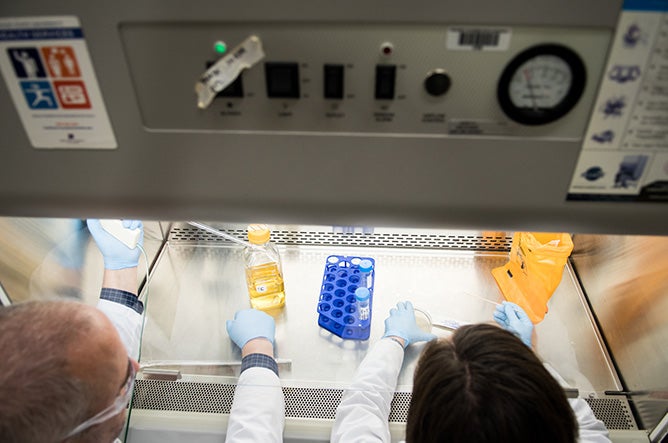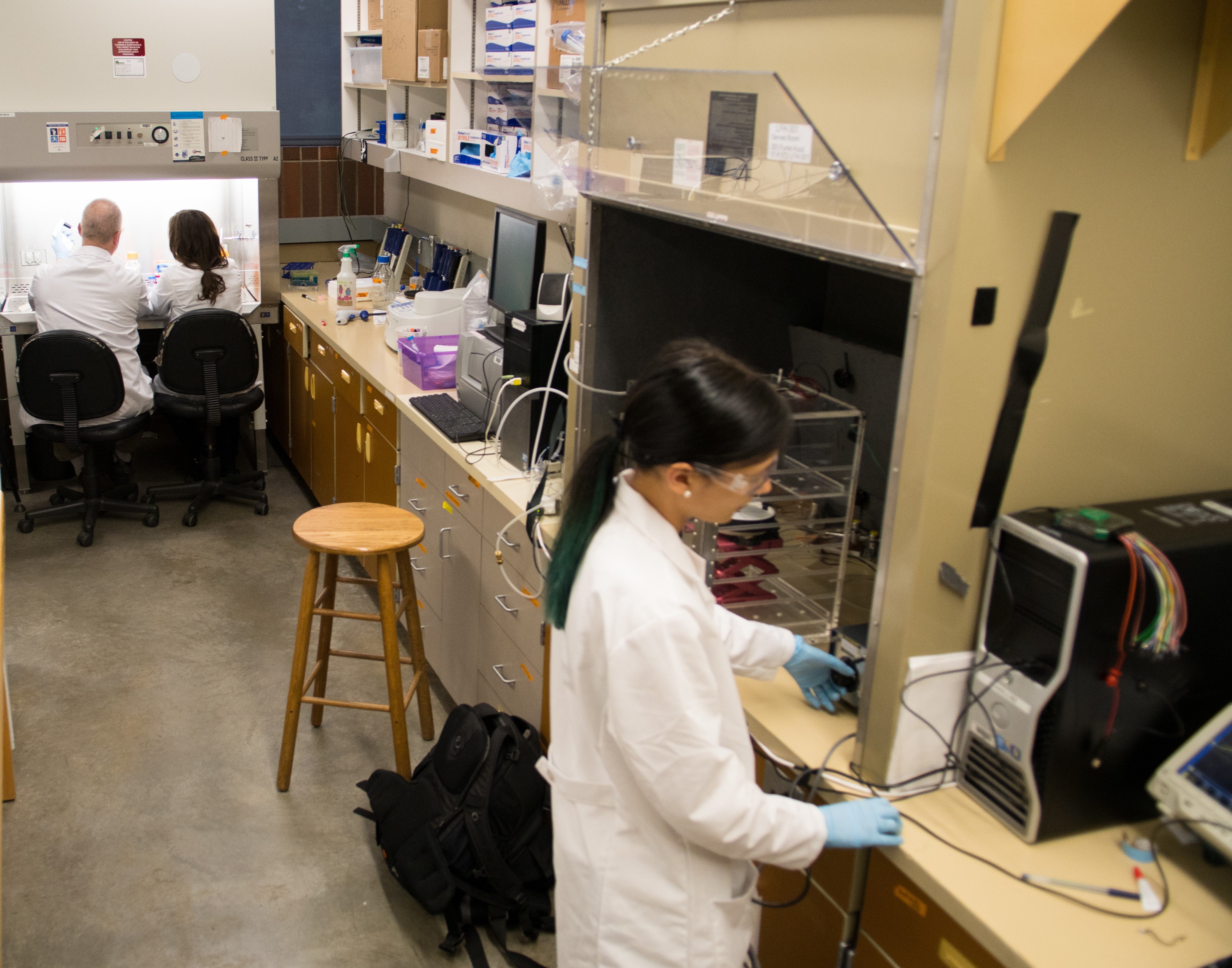
A transdisciplinary research team led by associate professor of electrical and computer engineering Jim Browning and chemistry professor Ken Cornell recently was awarded a $478,500 grant from the US Department of Agriculture to continue their work on engineered plasma arrays designed to remove biofilms from food processing surfaces. The project arose out of a collaboration between Browning and Cornell and colleagues mechanical engineering associate professor Don Plumlee (mechanical engineering) and biology professor Julia Oxford.
Foodborne pathogens create biofilms on surfaces encountered in food processing facilities. These pathogens are a significant source of contamination, resulting in millions of foodborne illness every year. Currently, reducing the incidence of foodborne pathogens in food processing equipment requires harsh chemicals and factory downtime. To address this problem, the research team proposes to develop new plasma technology which would save millions of dollars, decrease the incidence of foodborne illness, and reduce the use of precious water resources. Their project, entitled “Engineering Plasma Arrays to Remove Biofilms from Food” is intended to study the use of cold atmospheric pressure plasma to remove bacteria and viruses from surfaces in the food processing industry.
“This research could lead to a technology that would help food processing companies remove harmful bacteria from surfaces contaminated during normal operations,” Browning said. “We expect that the technology we develop could reduce the use of harsh chemicals while also improving food safety and worker safety.”

In addition to advancing food safety, this project provides a unique learning opportunity for numerous graduate and undergraduate students as part of an ongoing Vertically Integrated Project. Students from electrical engineering, mechanical engineering, health sciences, biology, chemistry and biochemistry are gaining hands-on experience and training in food safety.
The project also strengthens the capacity of Boise State University to perform food safety research, an emerging area of study for the institution. The team plans to invite local industry partners to tours campus facilities and discover opportunities to apply this technology to their business.
“One of my key responsibilities is leading outreach aimed at fostering economic development in Boise and the region,” said Harold Blackman, Boise State’s Vice President for Research and Economic Development. “This project presents exciting opportunities to develop new research capabilities that serve our local community. We expect that this new technology will enable agribusinesses to save money (and water) while reducing foodborne pathogens.”
By Jenn Ambrose